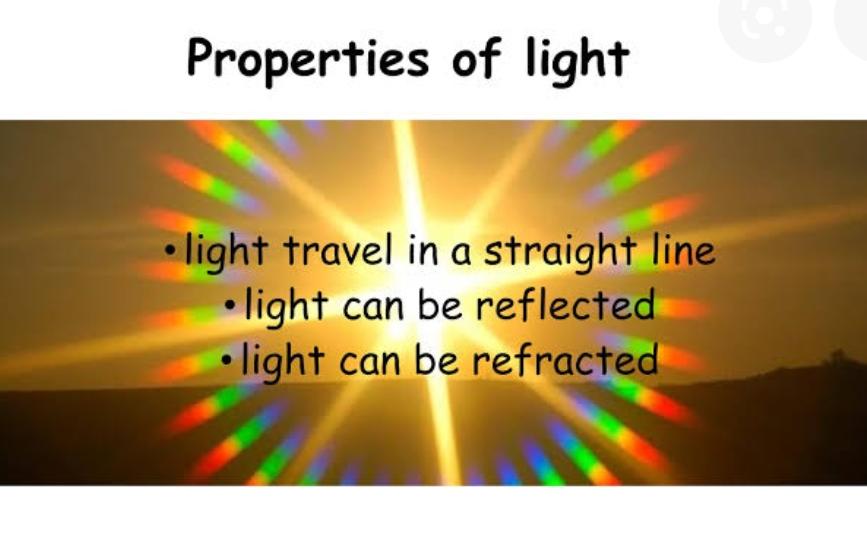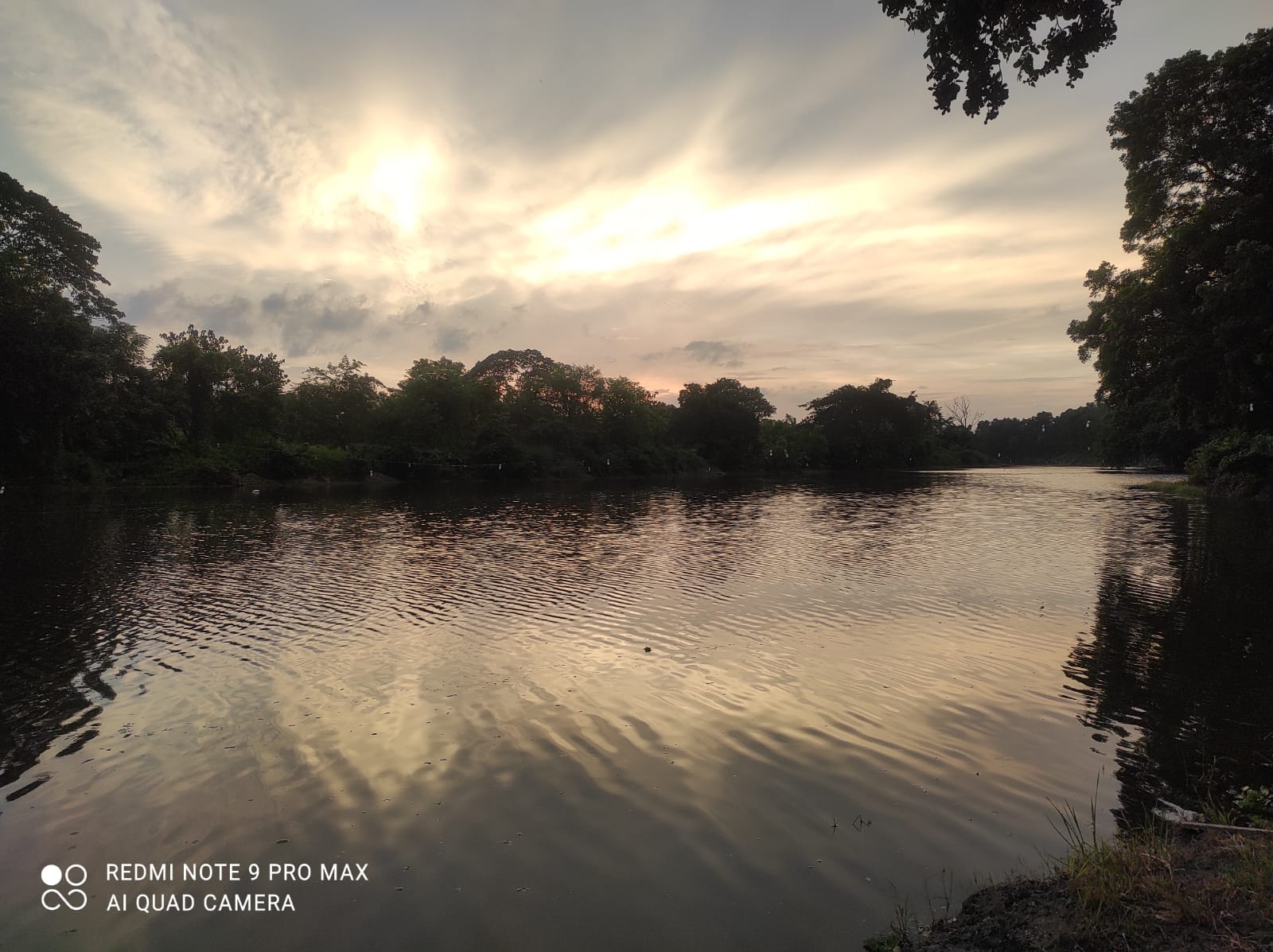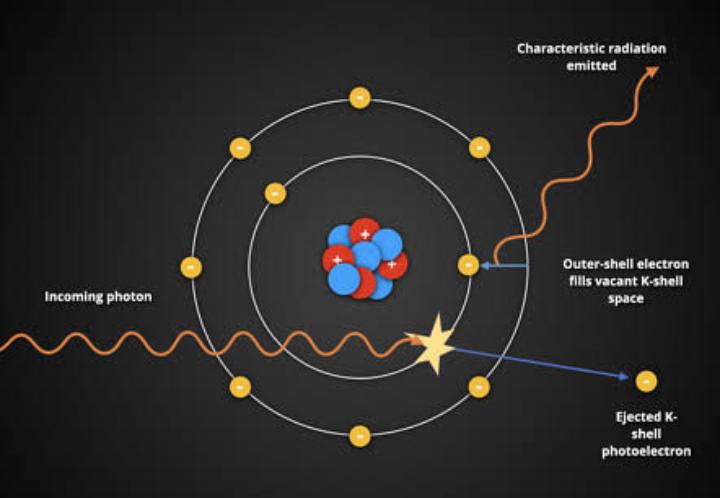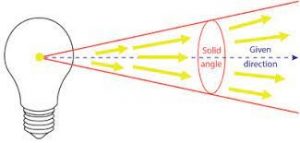Light is all around us,it not only lets us see in the dark,but the properties of light are important to many aspects of our lives.Refraction through lenses of eyeglasses or contact lens help some people see better.Light is a form of energy whose interaction with retina gives the sensation of sight.Thus light is the visible portion of the electromagnetic radiation spectrum.It lies between ultraviolet and infrared portions,from 400nm at the violet end of spectrum to 700nm at the red end.The white light consists of seven colours denoted by ‘VIBGYOR'(violet,indigo,blue, green, yellow, orange and red)
Properties of light:-
Some of the important properties of light are as follows:-
- Light is propagated as electromagnetic waves,it does not require medium for its propagation.
- Speed of light in free space is 3×10^8 m/s (186,000 miles/s)
- It is transverse in nature and so can be polarized.
- It is not deflected by electric and magnetic fields.
- When light passes from one medium to the other, velocity and wavelength change, amplitude may decrease or remain constant,but frequency and colour of light do not change,i.e. colour of light is determined by its frequency and not wavelength.For example, if red light passes from air to water (or glass),it’s velocity and wavelength in water (or glass) will be different from that in air but frequency and colour remain the same.
- Velocity of all wavelengths of light in free space is same and is equal to 3×10^8 m/s.So, in a medium the speed of light is different for different wavelengths.
- The speed of light in a medium is lesser than in vacuum.When the same light passes through different media,its speed with vary depending upon the density of medium (the denser the medium the lesser will be the speed of a given light).
- Light of a single wavelength is called monochromatic light.White light is heterochromatic.
- Light exhibitions phenomena like reflection, refraction, absorption, diffraction, interference and polarization.
• Interference of light:- When two or more wave trains of light of the same frequency travelling in almoy sane direction superimpose,the resultant intensity in the region of superimposition is in general different from the sum of the intensities due to individual waves.This modification in the distribution of intensity of light in the region of superimposition is called interference.Depending upon the way of waves superimpose,
the interference is of two types:-
a) Constructive interference
b) Destructive interference
Due to the phenomenon of interference we get intensity Maxima(due to constructive interference) and intensity minima (due to the destructive interference)which are called bright and dark fringes, respectively. It has been observed that to get interference effects, the waves must be coherent. The best condition for interference to occur is when the light is monochromatic, i.e. a narrow band of wavelengths. But interference can also be obtained with white light under optimum conditions.
Coherence is the measure of the ability of two light beams to produce interference.
Coherence is of two types:-
I)Spatial coherence
II)Temporal coherence
• Diffraction of light:- When the opaque obstacle or an aperture is placed between a source of light and screen, in accordance with rectilinear propagation of light, generally a sharp shadow or an illuminated region is obtained on the screen, When the size of aperture is larger than the wavelength of the light, there occurs rectilinear propagation of light. If the size of the obstacle or aperture is comparable with the wavelength of light, the light deviates from rectilinear propagation near the edge of the obstacle not aperture and enters the geometrical shadow. This flaring out or encroachment of light in the shadow zone as it passes around the obstacle or through small aperture is called diffraction.
Types of diffraction:-
a)Fresnel diffraction
b) Fraunhofer diffraction
• Polarization of light:- An ordinary beam of light consists of a large number of waves emitted by the atom or molecule of light source. Each atom produces a wave with its own orientation of electric vector, because all directions of vibrations of electric vector are equally probable, the resultant electromagnetic wave is a superimposition of waves produced by the individual atomic sources. This resultant wave is called unpolarized light. Thus unpolarized light consists of a random mixture of various plane-polarized beams. Parctical polarization, as the name implies , is a mixture of unpolarized and polarized light.
Some applications of polarized light:-
• Haidinger brush phenomenon is based bon polarized light
• Ophthalmic instruments in which polarized light is used generally to control unwanted reflections (slitlamp, ophthalmoscope).
• Three dimensional pictures
• Polarizing projection charts can be made to test one eye at a time while the patient vid viewing binocularly through a pair of special polarizing glasses.
• Polaroid sunglasses
• Reflection of light:- Reflection of light is a phenomenon of change in the path of light rays without any change in the medium. The light rays falling on the reflecting surface are called incident rays and those reflected by it is called reflected rays. Reflection of light is of various types:-
Two important ones to be considered are as follows:
- Specular reflection
- Diffuse reflection
Laws of reflection:-
a) The incident ray, the reflected ray and the normal at the point of incident ray all lie in the same plane
b) The angle of incidence is equal to the angle of reflection.
c) The light paths are reversible and sometimes result in a phenomenon called retroreflection.
•Refraction of light:- Refraction of light is the phenomenon of change in the path of light, when it goes from one medium to another. The main cause of refraction is change in the velocity of light in going from one medium to the other.
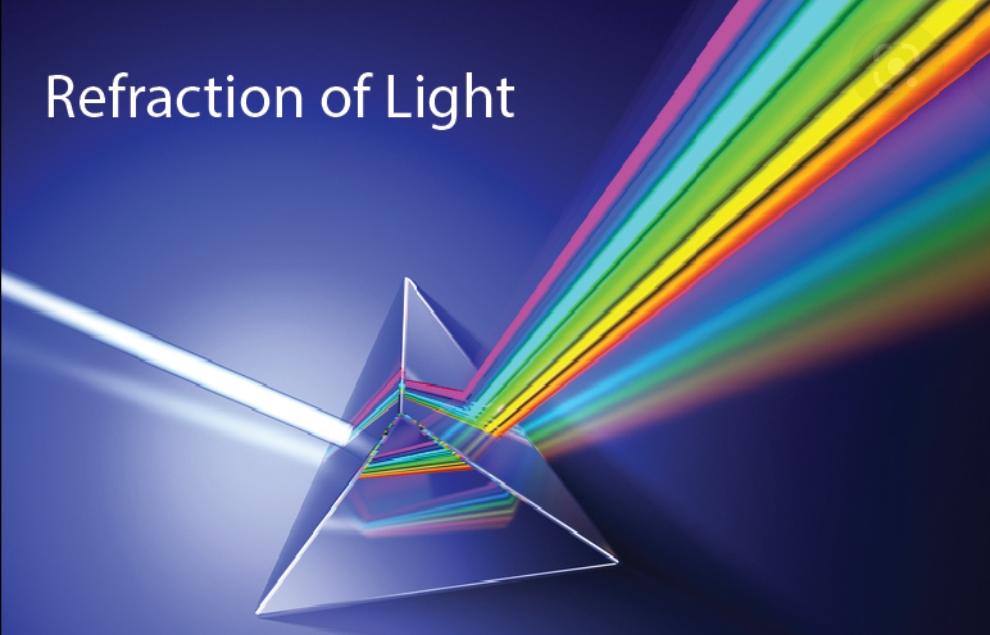
Laws of refraction:-
1) The incident and the refracted rays are on opposite sides of the normal and all the three are in the same plane
2) The ratio of sine of angle of incidence to the some of angle of refraction is constant for the part of media in constant.This law is also called Snell’s law of refraction.
